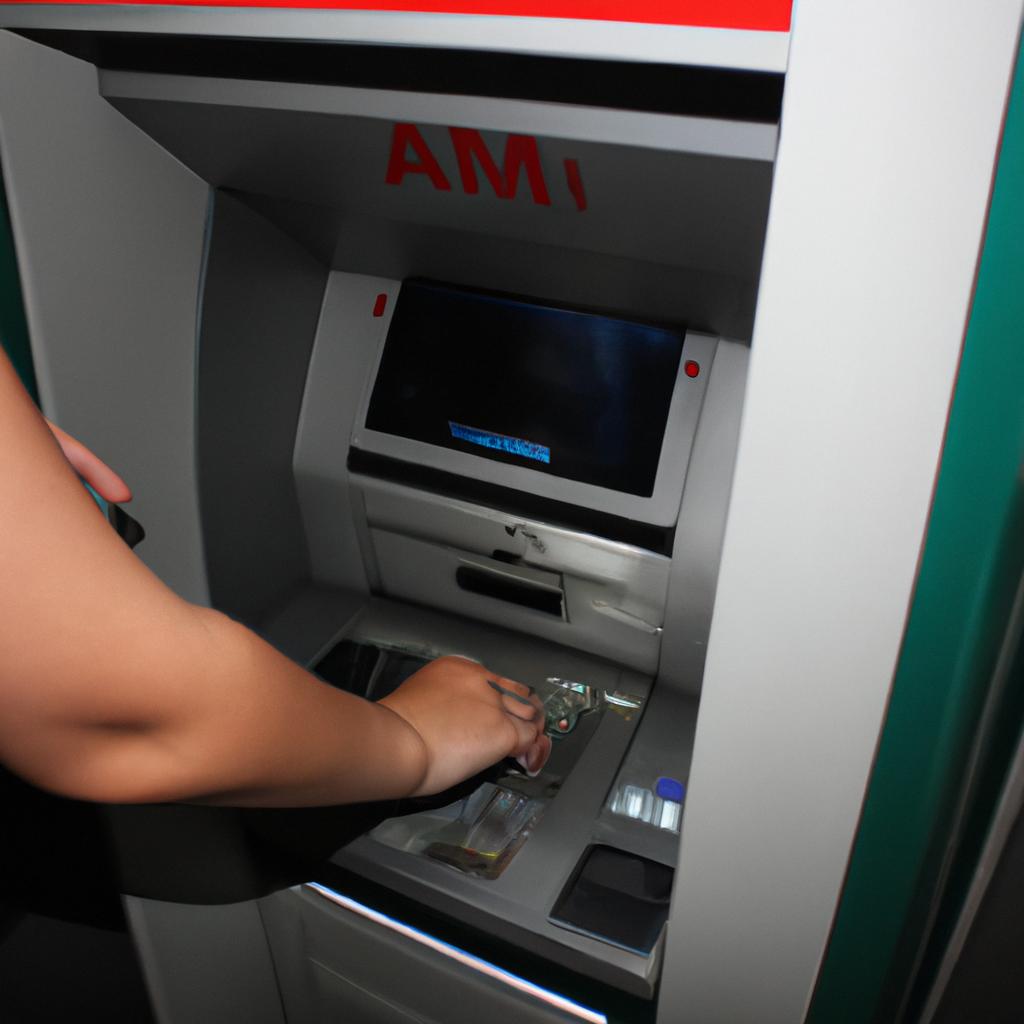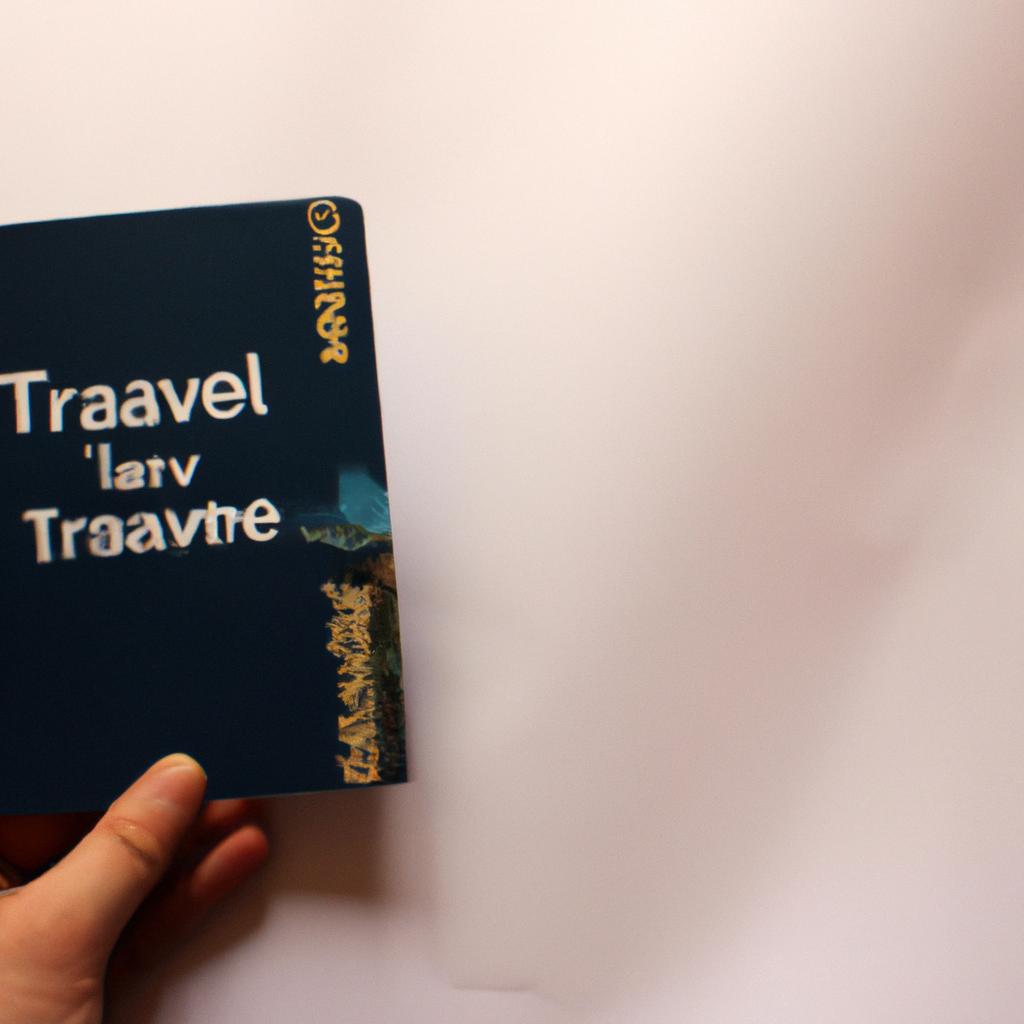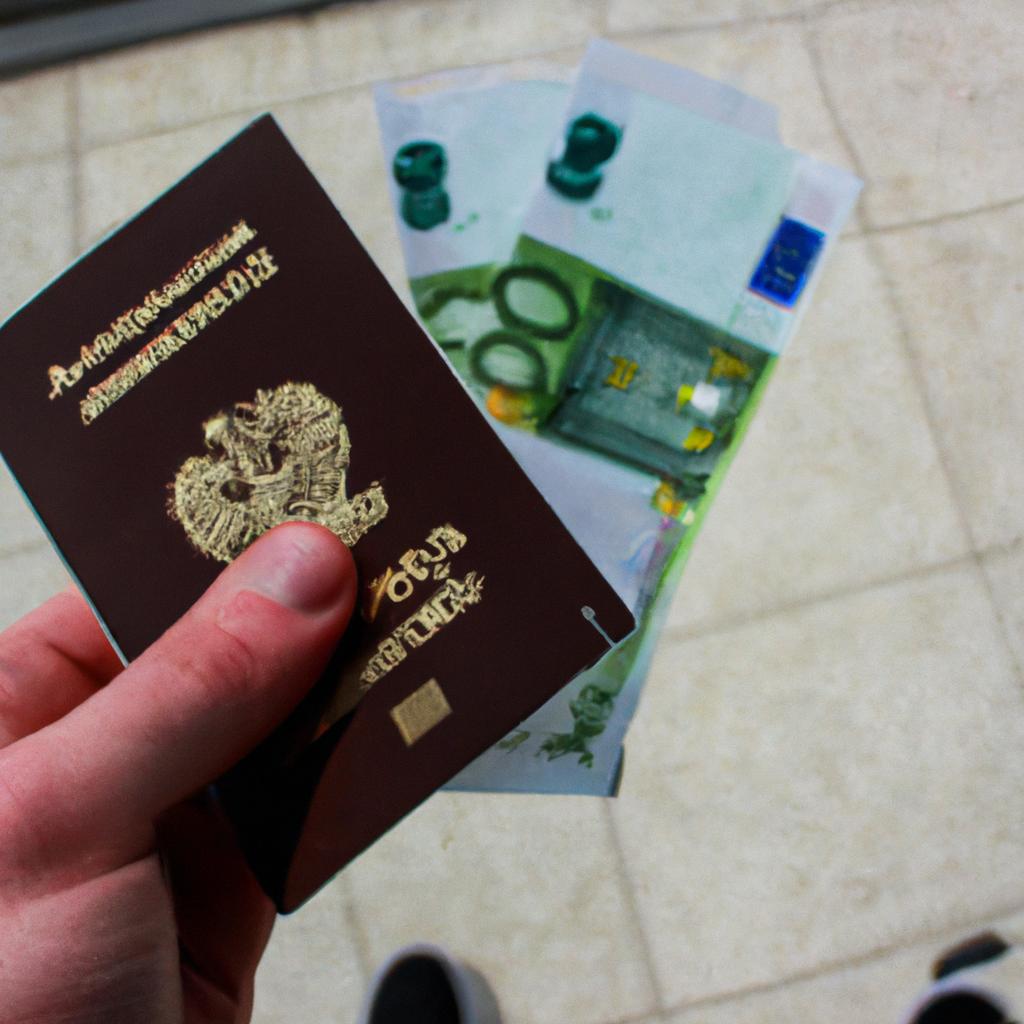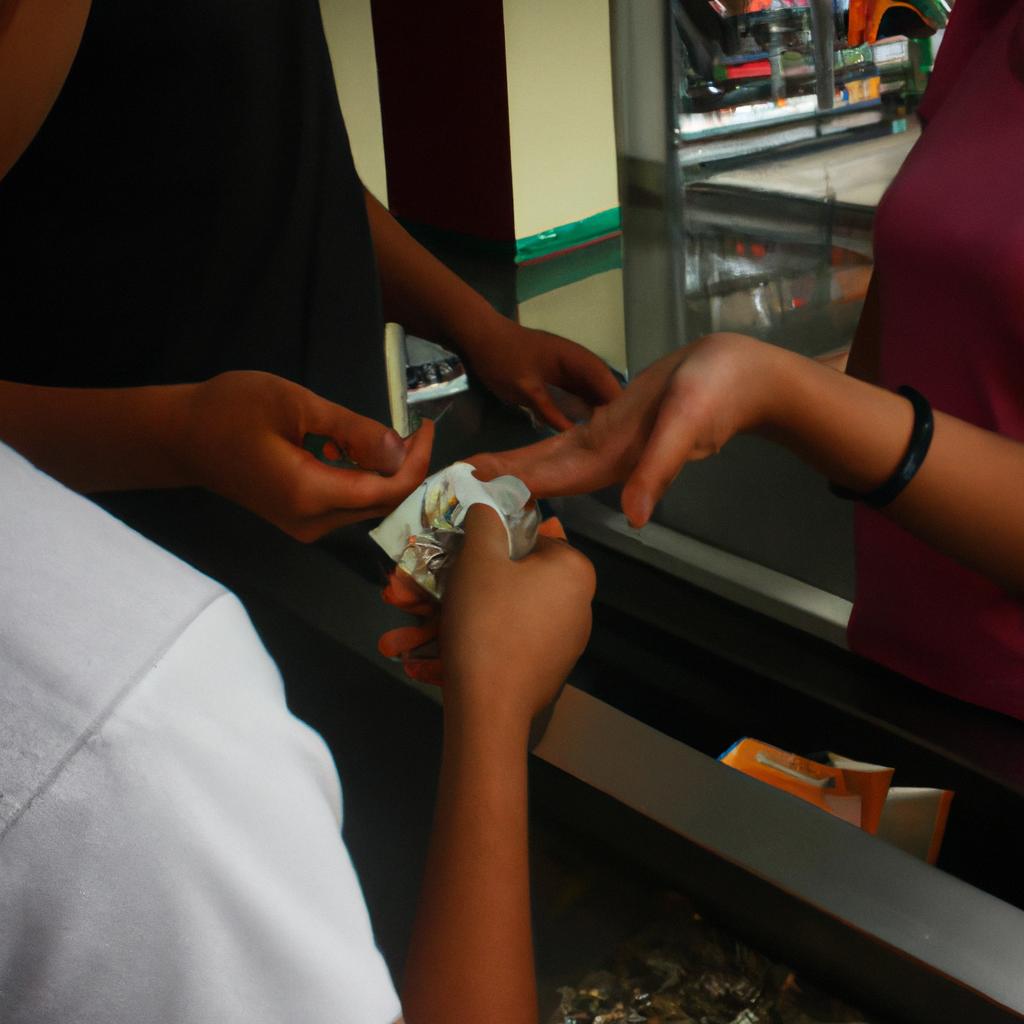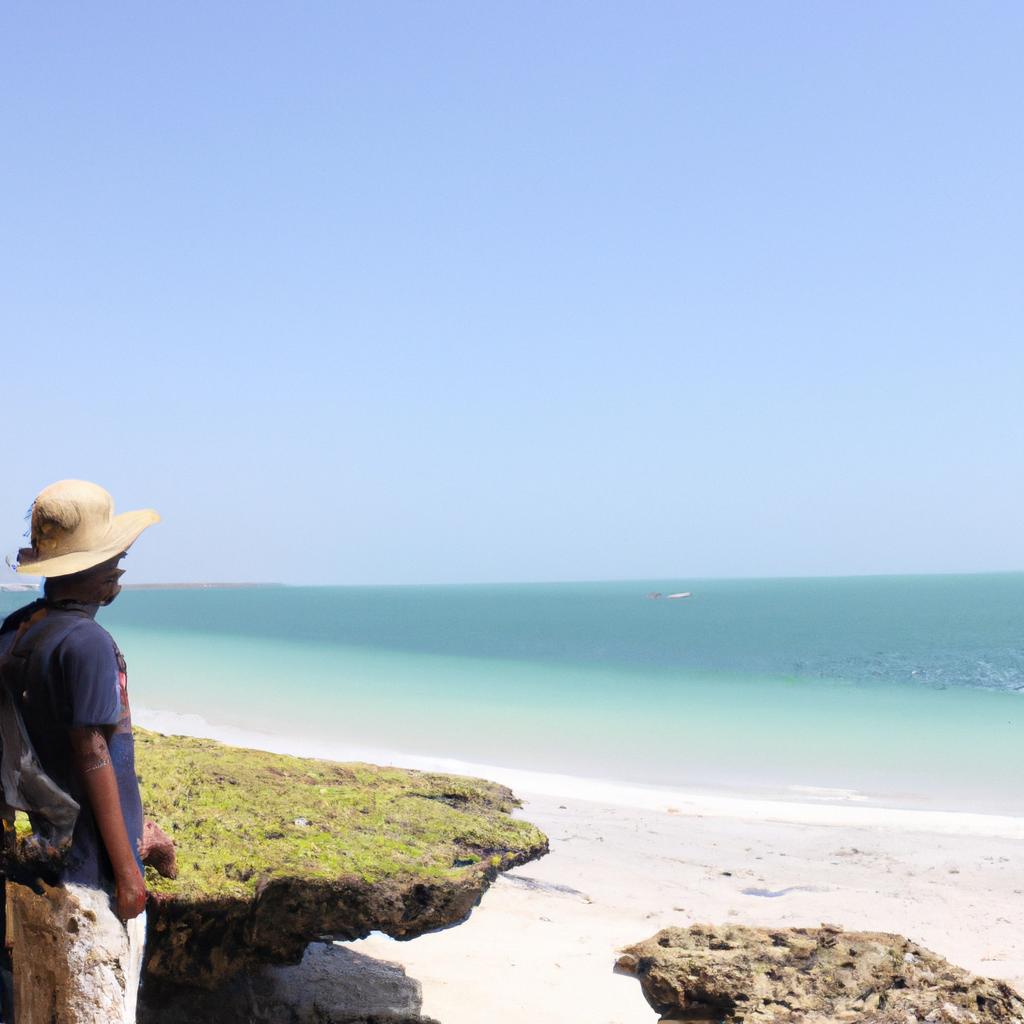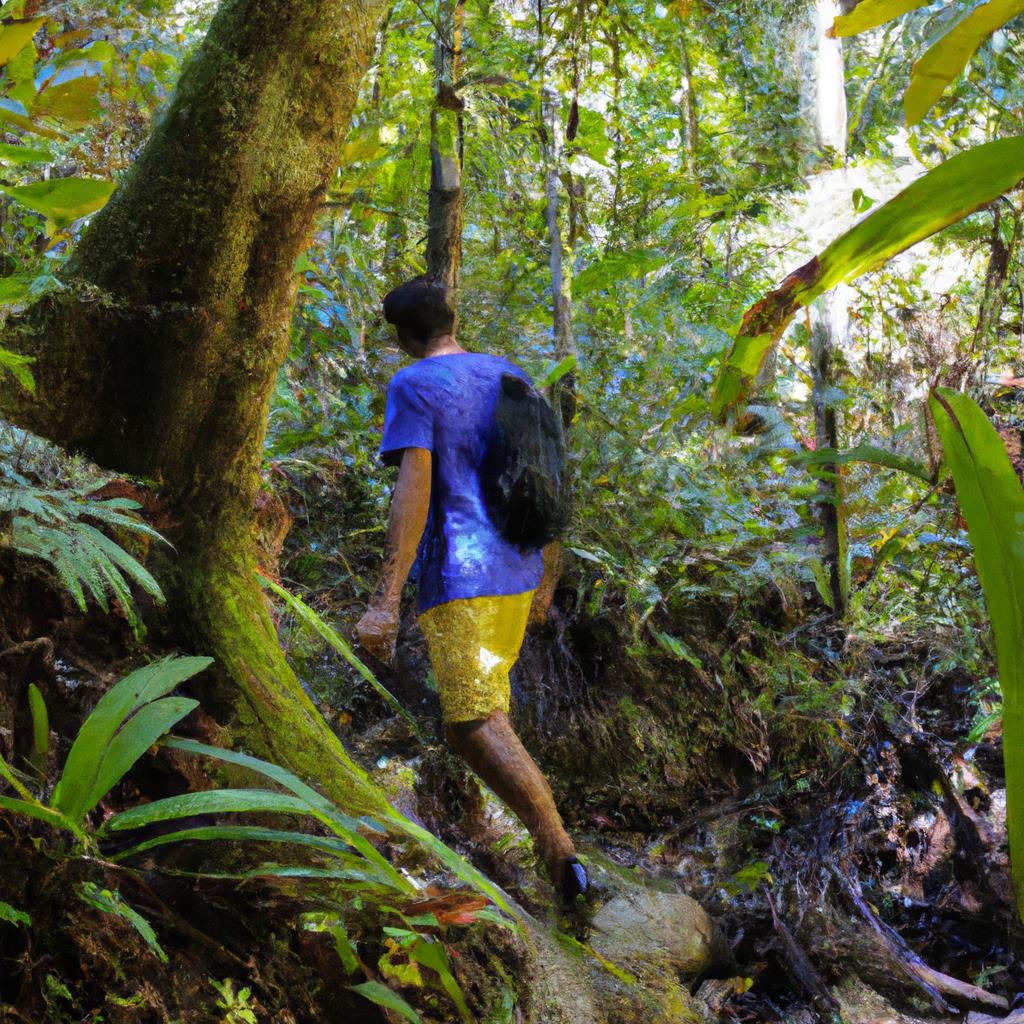Travel Finances: Tips for Managing Your Money in Travel Puerto Rico
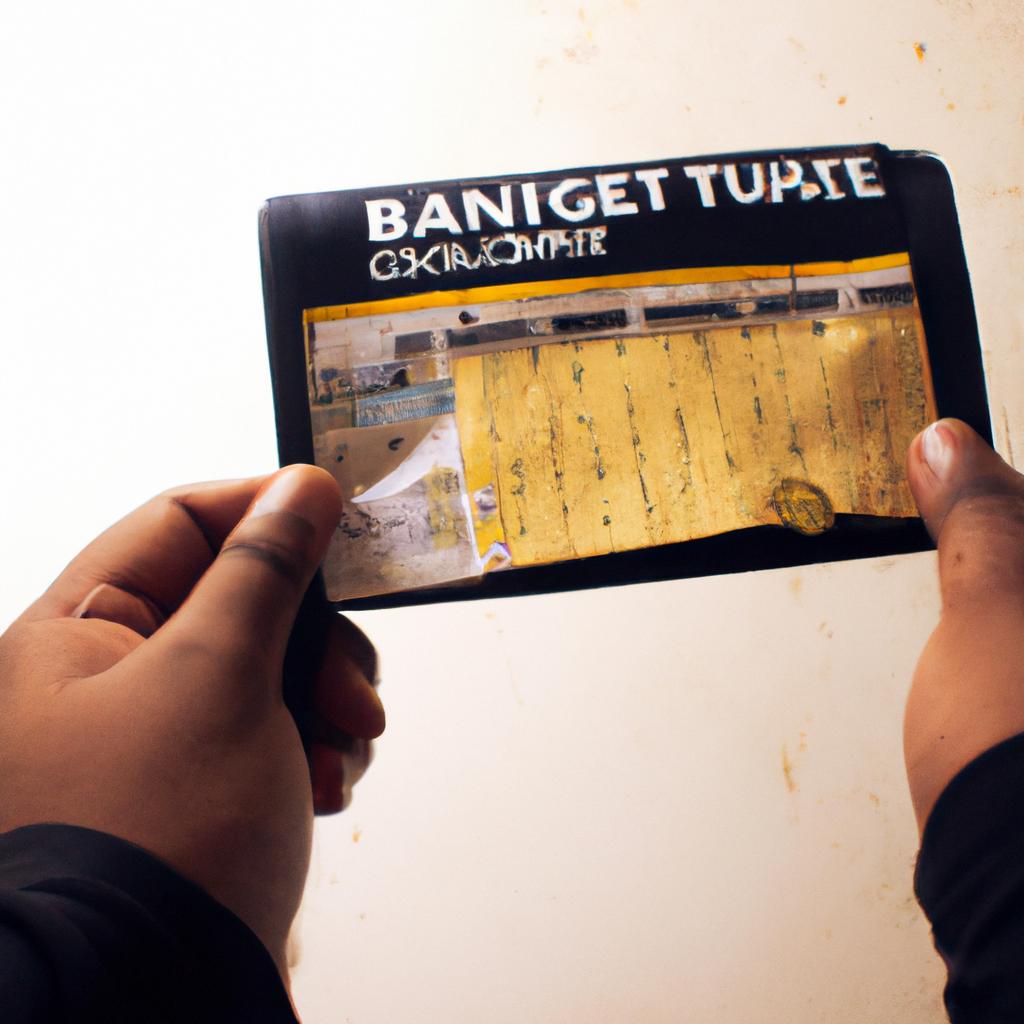
Traveling to Puerto Rico can be an exciting and enriching experience, but it is essential to plan and manage your finances effectively in order to make the most of your trip. In this article, we will explore some useful tips for managing your money while traveling in Puerto Rico. For instance, let us consider the case of Sarah, a budget-conscious traveler who recently visited the island. Despite wanting to enjoy all that Puerto Rico has to offer, Sarah was concerned about overspending and wanted to ensure she stayed within her allocated travel budget.
Managing your travel finances begins with careful planning before you even set foot on Puerto Rican soil. Researching and creating a realistic budget based on expected expenses such as accommodation, transportation, food, activities, and souvenirs is crucial. By having a clear understanding of how much money you have available and allocating specific amounts for each category, you can avoid overspending or running out of funds prematurely. Additionally, it is advisable to research local currency exchange rates beforehand so that you are familiar with the value of the US dollar against the Puerto Rican peso. This knowledge will help you determine if certain purchases or services are reasonably priced or potentially overpriced due to unfavorable exchange rates.
Planning your expenses
Planning your expenses is a crucial step in ensuring a smooth and stress-free travel experience to Puerto Rico. By carefully considering your financial needs, you can make the most of your trip without worrying about overspending or running out of money.
To illustrate the importance of planning expenses, let’s consider an example. Imagine you are traveling to San Juan, Puerto Rico for a week-long vacation. Without proper planning, it would be easy to underestimate the cost of accommodation, transportation, food, and activities. This could potentially lead to unexpected expenses and may limit your ability to fully enjoy all that Puerto Rico has to offer.
To help manage your finances effectively while traveling in Puerto Rico, here are some key considerations:
-
Budgeting: Create a budget that outlines how much you are willing to spend on different aspects of your trip such as accommodation, meals, transportation, and entertainment. Having a clear understanding of your spending limits will allow you to prioritize certain experiences over others and avoid unnecessary expenditures.
-
Researching Costs: Before embarking on your journey, research the average costs associated with various services in Puerto Rico. For instance, look into hotel prices across different neighborhoods or regions within the country so that you can choose options that align with your budgetary constraints.
-
Tracking Expenses: Keep track of every expense during your trip by maintaining a detailed record or using personal finance apps specifically designed for travelers. This way, you can easily monitor where your money is going and identify areas where adjustments need to be made.
-
Emergency Fund: It’s always wise to have an emergency fund set aside for unforeseen circumstances like medical emergencies or unexpected changes in plans. Consider setting aside some extra cash beyond what you anticipate needing during your stay in Puerto Rico.
By following these guidelines and being mindful of your expenditure patterns, you can ensure that you make informed decisions regarding managing travel finances throughout your trip.
Transitioning into the next section about “Understanding local currency,” it is important to familiarize yourself with the local currency exchange rates and payment methods in Puerto Rico. This knowledge will allow you to navigate financial transactions more effectively during your stay.
Understanding local currency
Having planned your expenses, it is now crucial to understand the local currency in Puerto Rico before embarking on your travel journey. By familiarizing yourself with the Currency exchange rates and payment options available, you can effectively manage your money while exploring this beautiful destination.
Example:
To illustrate the importance of understanding local currency, let’s consider a hypothetical scenario. Imagine you are dining at a restaurant in Old San Juan, and when presented with the bill, you realize that you only have US dollars on hand. Without knowledge of the local currency or access to alternative payment methods, such as credit cards or mobile payments, navigating this situation could become challenging.
Understanding local currency:
-
Exchange rates: Familiarize yourself with the current exchange rate between your home currency and the Puerto Rican peso (PR$). This will help you gauge whether a price quoted in PR$ is reasonable compared to what you would pay in your own currency.
-
Payment options: While cash is widely accepted in Puerto Rico, having multiple payment options can offer convenience and security during your travels. Consider carrying a combination of cash and cards to cater to different situations and establishments that accept card payments.
-
ATMs: Locate nearby ATMs where you can withdraw cash using your debit or credit card. Be aware of any associated fees for international transactions imposed by both your bank and the ATM provider. It may be beneficial to notify your bank about your travel plans beforehand to prevent any unexpected issues.
-
Money-saving tips: To make the most out of your travel budget, here are some additional suggestions:
- Research locations offering favorable exchange rates or lower transaction fees.
- Keep small bills handy for smaller vendors who may not accept larger denominations.
- Compare prices at different places before making purchases to ensure you’re getting value for money.
- Consult locals or fellow travelers for recommendations on reliable exchange offices or trustworthy establishments.
Table: Currency Exchange Rates
| Currency | Exchange Rate (PR$) |
|---|---|
| US Dollar | 1 PR$ = $0.00 |
| Euro | 1 PR$ = €0.00 |
| British Pound | 1 PR$ = £0.00 |
| Canadian Dollar | 1 PR$ = C$0.00 |
By understanding the local currency and adopting these financial tips, you can navigate Puerto Rico’s monetary landscape with confidence, ensuring a smoother travel experience overall.
Transition into subsequent section:
Now that we have explored understanding local currency, let’s move on to discussing how you can access cash while traveling in Puerto Rico.
Accessing cash while traveling
Understanding local currency is essential when managing your money while traveling in Puerto Rico. By familiarizing yourself with the local currency, you can make informed decisions and avoid unnecessary fees or misunderstandings. For example, imagine you are visiting San Juan, and you come across a street vendor selling delicious empanadas. You decide to buy one but realize that you only have US dollars on hand. Understanding the local currency would allow you to know how much an empanada costs in Puerto Rican pesos and whether it fits within your budget.
To further assist you in managing your travel finances effectively, here are some key tips:
-
Exchange rates: Stay up-to-date with the latest exchange rates between your home currency and the Puerto Rican peso. This will give you a better understanding of the value of items and help prevent overspending or getting ripped off.
-
Comparison shopping: Explore different locations for exchanging currencies to find the best rates and lowest fees. Banks, currency exchange offices, or ATMs may offer varying options, so take time to compare before making any transaction.
-
Cash vs. card: While carrying cash can be convenient for smaller purchases or places that might not accept cards, relying solely on cash poses risks like loss or theft. Consider using a combination of cash and debit/credit cards based on your needs and security preferences.
-
Budgeting wisely: Establish a realistic travel budget before departing and allocate funds accordingly for accommodation, transportation, meals, activities, souvenirs, etc. Keeping track of expenses during your trip will help ensure that you stay within your financial limits.
Now let’s move onto the next section about accessing cash while traveling without worrying about losing money or being unable to withdraw cash when needed.
Choosing the right payment method
Accessing cash while traveling is an essential aspect of managing your finances. Understanding the options available to you can help ensure that you have access to money when you need it. For instance, let’s consider a hypothetical scenario where Sarah is visiting Puerto Rico for a week-long vacation. She needs to find the most convenient and secure ways to obtain cash during her trip.
Here are some tips for accessing cash while traveling in Puerto Rico:
-
Use ATMs: ATMs are widely available in Puerto Rico and offer convenience for withdrawing cash. However, be mindful of transaction fees and currency exchange rates imposed by both your bank and the ATM operator. It may be wise to withdraw larger amounts at once to minimize these charges.
-
Inform your bank: Before leaving for Puerto Rico, inform your bank about your travel plans. This step helps prevent any unnecessary holds or issues with accessing funds from your accounts while abroad.
-
Carry some local currency: While many places in Puerto Rico accept credit cards, it’s always helpful to have some local currency on hand, especially for smaller businesses or establishments that may not accept cards.
-
Consider traveler’s checks: Although traveler’s checks are less commonly used today due to advancements in technology, they can still serve as a reliable backup option if other forms of payment fail or get lost/stolen.
To further illustrate the importance of managing travel finances effectively, here is a table outlining potential advantages and disadvantages of different methods of accessing cash in Puerto Rico:
| Method | Advantages | Disadvantages |
|---|---|---|
| ATMs | Convenient; widespread availability | Transaction fees |
| Credit/Debit | Accepted almost everywhere | Foreign transaction fees |
| Cards | ||
| Traveler’s | Secure; replaceable if lost/stolen | Limited acceptance |
| Checks | ||
| Carrying | Useful for smaller businesses | Risk of loss or theft |
| local currency |
By keeping these tips in mind and understanding the pros and cons of different methods, you can make informed decisions about accessing cash while traveling in Puerto Rico. Next, we will explore choosing the right payment method to further enhance your travel financial management strategy.
Transitioning into the subsequent section on Protecting yourself with insurance, it is crucial to consider how unforeseen circumstances may impact your finances during your trip.
Protecting yourself with insurance
Transitioning from the previous section on choosing the right payment method, it is crucial to consider protecting yourself with insurance when managing your travel finances in Puerto Rico. Let’s explore why having adequate insurance coverage is essential and how it can contribute to a worry-free travel experience.
Imagine you have planned an exciting adventure in Puerto Rico, filled with hiking through lush rainforests, exploring historical sites, and indulging in local cuisine. Unfortunately, during one of your hikes, you slip and injure your ankle. Without travel insurance, this unexpected mishap could leave you facing significant medical expenses or even stranded without proper assistance.
To ensure peace of mind throughout your trip, here are some reasons why investing in travel insurance is prudent:
- Medical emergencies: Travel insurance provides coverage for unforeseen accidents or illnesses that may require medical attention while abroad.
- Trip cancellation or interruption: Insurance protects against financial losses if you need to cancel or cut short your trip due to unexpected events like illness, natural disasters, or airline strikes.
- Lost baggage and personal belongings: In case of lost luggage or theft of personal items during your journey, travel insurance offers compensation to replace these belongings.
- Emergency evacuation: If there is a need for immediate evacuation due to civil unrest or natural disasters, having insurance ensures that necessary arrangements will be made promptly.
Consider the following table showcasing different types of travel insurance plans available:
| Type of Travel Insurance | Coverage Offered |
|---|---|
| Medical | Expenses related to medical emergencies and hospitalization |
| Trip Cancellation | Reimbursement for non-refundable costs if you must cancel before departure |
| Baggage Loss/Damage | Compensation for lost/damaged luggage |
| Evacuation | Assistance and transportation back home in emergency situations |
In conclusion,
ensuring appropriate protection with comprehensive travel insurance allows you to enjoy your time in Puerto Rico without unnecessary financial burdens. Before embarking on your journey, carefully assess the coverage options available and choose a plan that aligns with your specific needs.
Transitioning to the subsequent section on maximizing tax savings when managing travel finances in Puerto Rico, let’s explore how you can make the most of your financial resources while enjoying this stunning destination.
Maximizing tax savings
Protecting yourself with insurance is essential when traveling to Puerto Rico, but another crucial aspect of managing your travel finances is maximizing tax savings. By understanding the various tax deductions and credits available to travelers, you can potentially save a significant amount of money.
For example, let’s consider a hypothetical case study of Sarah, who traveled to Puerto Rico for business purposes. She incurred several expenses during her trip, such as transportation costs, lodging fees, meals, and even conference registration fees. These expenses could potentially be eligible for tax deductions or credits.
To help you navigate through this complex topic, here are some key strategies to maximize your tax savings while traveling:
-
Research Tax Laws: Familiarize yourself with the specific tax laws that apply in Puerto Rico and understand how they may differ from those in your home country or state. This knowledge will enable you to identify which expenses qualify for deductions or credits.
-
Keep Detailed Records: Maintain thorough records of all your travel-related expenses by saving receipts, invoices, and any other relevant documentation. Having organized records makes it easier to claim deductions accurately and avoid potential audits.
-
Consult a Tax Professional: Consider seeking professional advice from a certified tax consultant familiar with international taxation laws. They can provide personalized guidance based on your specific circumstances and ensure compliance with all legal requirements.
-
Utilize Technology Tools: Take advantage of technology tools like expense tracking apps or software that simplify record-keeping tasks and categorize expenses automatically. These tools can make the process more efficient and reduce the chances of errors in calculations.
By following these strategies, you can optimize your travel-related tax benefits and minimize unnecessary financial burdens associated with your trip to Puerto Rico.
In preparation for setting a travel budget, it’s important to have a clear understanding of what factors should be considered when planning your expenditures.
Setting a travel budget
Building on the importance of Maximizing tax savings, it is equally crucial to set a travel budget before embarking on your journey. Proper financial planning ensures that you make the most of your resources and have control over your expenses. Let’s explore some key tips for setting a travel budget.
Setting a travel budget
To illustrate the significance of establishing a travel budget, let’s consider an example. Imagine you are planning a trip to Puerto Rico for two weeks. Without a clear budget in mind, it becomes easy to overspend or underestimate how much money you will need during your stay. By creating a comprehensive travel budget, you can allocate funds effectively and avoid any unnecessary financial stress throughout your trip.
Consider the following guidelines when setting up your travel budget:
- Determine essential expenses: Start by identifying fixed costs such as accommodation, transportation, meals, and activities that you cannot compromise on.
- Allocate discretionary spending: Plan for additional activities or purchases that may arise once you reach your destination. This could include shopping, entertainment, or spontaneous excursions.
- Account for unexpected occurrences: It’s always wise to set aside emergency funds in case of unforeseen circumstances like medical emergencies or sudden changes in plans.
- Research local cost of living: Gain insight into the average prices of goods and services at your chosen destination. This information allows you to estimate daily expenditure more accurately.
Table Example:
| Expenses | Estimated Cost |
|---|---|
| Accommodation | $100 per night |
| Transportation | $50 per day |
| Meals | $30 per meal |
| Activities | $200 total |
By adhering to these guidelines and creating a well-defined travel budget, you gain financial clarity and ensure that your expenditures align with your overall goals for the trip. With this approach, managing your finances becomes less stressful so that you can focus on enjoying all that Puerto Rico has to offer.
Now, let’s delve into the importance of researching the local cost of living before embarking on your trip.
Researching local cost of living
Having established a travel budget, it is crucial to further enhance your financial planning by researching the local cost of living. By understanding the expenses associated with your destination, you can make more informed decisions about how to allocate your funds during your trip. Let’s delve into the importance of researching the local cost of living and the benefits it offers.
Researching the local cost of living allows you to gain insight into various factors that might affect your travel finances. For instance, let’s consider a hypothetical traveler named Sarah who plans to visit Puerto Rico for two weeks. Before her trip, Sarah conducts thorough research on the average prices for food, transportation, accommodation, and activities in Puerto Rico. This information helps her estimate her daily expenses and adjust her budget accordingly.
To illustrate this point further, here are some key reasons why researching the local cost of living is essential:
- Avoid unexpected costs: Understanding pricing trends enables you to anticipate any potential additional expenses or hidden charges that may arise during your stay.
- Make informed choices: With knowledge of typical price ranges, you can evaluate different options available at varying costs and choose what aligns best with both your preferences and financial capabilities.
- Optimize resource allocation: Researching local prices helps you identify areas where you can save money without compromising on experiences or quality.
- Plan ahead effectively: Armed with an accurate estimation of costs, you can plan each day meticulously while ensuring sufficient funds are allocated for all necessary expenditures.
Consider this table showcasing average prices in Puerto Rico as an example:
| Expense | Average Price Range |
|---|---|
| Meal (inexpensive restaurant) | $8 – $15 |
| Public Transportation (one-way ticket) | $0.75 – $1.50 |
| Mid-range Hotel (per night) | $90 – $150 |
| Entrance Fee (for tourist attractions) | $10 – $25 |
By using the information gathered from local cost of living research, you can make educated decisions that align with your budget and personal preferences.
Armed with a comprehensive understanding of the local cost of living in Puerto Rico, you are now equipped to move forward and find affordable accommodation. By securing reasonably priced lodging options, you can further optimize your travel finances without compromising on comfort or convenience.
Finding affordable accommodation
Once you have researched the local cost of living in Puerto Rico, it is time to find affordable accommodation that fits your budget. Let’s explore some tips and strategies for securing a place to stay without breaking the bank.
Section – Finding Affordable Accommodation:
Example: To illustrate these strategies, let’s consider the case of Maria, a budget-conscious traveler planning her trip to Puerto Rico. She wants to experience the culture and beauty of the island while minimizing her expenses on accommodation.
- Consider alternative options:
- Look for guesthouses or hostels: These types of accommodations often offer lower rates compared to hotels.
- Explore vacation rentals: Websites like Airbnb provide opportunities to rent apartments or rooms from locals at more affordable prices.
- Stay with locals through couchsurfing platforms: This not only saves money but also allows you to connect with residents who can share valuable insights about Puerto Rico.
Table Example:
| Accommodation Options | Advantages | Disadvantages |
|---|---|---|
| Guesthouses/Hostels | Low cost | Shared spaces |
| Vacation Rentals | More space | Limited amenities |
| Couchsurfing | Free | Lack of privacy |
-
Be flexible with locations:
Consider staying outside popular tourist areas where prices tend to be higher. Exploring neighborhoods away from major attractions can lead you to hidden gems that offer better value for your money. -
Utilize online resources:
Take advantage of websites and apps dedicated to finding cheap accommodation deals. Compare prices across different platforms and read reviews from previous guests before making a booking decision.
Bullet Point List Example:
- Seek out discounts during off-peak seasons.
- Negotiate prices directly with property owners if possible.
- Join loyalty programs or subscribe to newsletters for exclusive offers.
- Consider house-sitting opportunities as an option for free accommodation.
By following these tips, Maria was able to find a comfortable apartment through a vacation rental website, saving a significant amount of money compared to traditional hotels. With her accommodation secured, she was now ready to focus on other ways to optimize her travel finances.
Now let’s explore some strategies for saving money on transportation during your time in Puerto Rico.
Saving money on transportation
Transitioning from finding affordable accommodation, another crucial aspect of managing your travel finances is saving money on transportation. By employing smart strategies and making informed choices, you can significantly reduce your expenses in this area.
For instance, consider the case study of Maria, a budget-conscious traveler visiting Puerto Rico. Maria wanted to explore the island’s diverse landscapes but didn’t want to spend a fortune on transportation. She discovered several ways to cut costs while getting around:
- Public Transportation: Utilize public buses or trains whenever possible. They offer affordable fares and allow you to experience local culture firsthand.
- Ride-Sharing Services: Consider using ride-sharing services like Uber or Lyft, which often have competitive rates compared to traditional taxis.
- Carpooling: If traveling with friends or other tourists heading in the same direction, sharing rental car costs can be an economical option.
- Walking and Biking: Take advantage of walkable areas within cities or rent bicycles for short distances.
To illustrate further how these strategies can impact your budget, here is a table showcasing potential savings through different modes of transportation:
| Mode of Transportation | Average Cost (per day) | Potential Savings |
|---|---|---|
| Rental Car | $50 | – |
| Public Transportation | $5 | $45 |
| Ride-Sharing | $20 | $30 |
| Walking/Biking | $0 | $50 |
As you can see from the table above, opting for public transportation or walking/biking instead of renting a car could save you up to $50 per day during your travels in Puerto Rico.
By implementing these cost-saving measures for transportation, you will not only keep more money in your pocket but also contribute to sustainable travel practices by reducing carbon emissions associated with private vehicle usage.
In managing daily expenses section about “Managing daily expenses,” you can find further tips and strategies to ensure your travel finances are well-managed.
Managing daily expenses
After implementing strategies to save money on transportation, it is crucial to focus on managing your daily expenses efficiently. By doing so, you can make the most out of your budget and ensure a financially stress-free travel experience in Puerto Rico.
Managing Daily Expenses:
To illustrate the importance of effective expense management, let’s consider a hypothetical scenario. Imagine you have set aside $500 for food and miscellaneous expenses during your week-long trip to Puerto Rico. Without proper planning, it would be easy to overspend or run out of funds before the end of your stay. However, by following these tips, you can maximize your resources and maintain control over your spending:
-
Budgeting wisely:
- Determine an approximate amount you are willing to spend each day.
- Allocate separate budgets for meals, activities, souvenirs, and other expenditures.
- Stick to your predetermined budgets as closely as possible.
-
Prioritizing essential purchases:
- Identify what is truly necessary versus what may be considered optional.
- Focus on experiences that align with your interests and values.
- Avoid impulse buying by carefully evaluating potential purchases.
-
Seeking cost-effective options:
- Research affordable dining establishments that offer local cuisine at reasonable prices.
- Look for discounts or promotional offers when booking tours or participating in activities.
- Consider sharing costs with fellow travelers by splitting bills or opting for group rates.
-
Monitoring expenditure regularly:
| Date | Expense Category | Amount Spent ($) |
|---|---|---|
| 01/07/2022 | Meals | $30 |
| 02/07/2022 | Souvenirs | $20 |
| 03/07/2022 | Activities | $40 |
| 04/07/2022 | Miscellaneous | $25 |
- Keep a record of your daily expenses using a journal or budgeting app.
- Analyze your spending periodically to identify areas where adjustments can be made.
By adopting these practices, you can ensure that your travel funds are utilized efficiently and effectively. Tracking your spending will play a crucial role in maintaining financial stability throughout your trip to Puerto Rico.
Tracking your spending
Managing Daily Expenses
To effectively manage your daily expenses while traveling in Puerto Rico, it is important to have a clear understanding of where and how you are spending your money. By keeping track of your spending habits, you can make informed decisions about your finances and avoid overspending. Let’s consider an example scenario to illustrate the importance of managing daily expenses.
Imagine that you are staying in San Juan for a week-long vacation. On the first day, you decide to explore the vibrant local food scene and visit several popular restaurants in the area. While indulging in delicious meals may be tempting, it is crucial to keep track of how much you spend on dining out each day. This will help you allocate your budget wisely and prevent any unexpected financial burden towards the end of your trip.
To assist with tracking daily expenses, here are some practical tips:
- Keep receipts: Make sure to collect receipts for all purchases made during your travels, including meals, transportation, and souvenirs. These receipts will serve as tangible evidence of your expenditures.
- Create a spreadsheet or use expense-tracking apps: Utilize technology by creating a simple spreadsheet or using mobile applications specifically designed for expense tracking. These tools allow you to record every expense accurately and conveniently.
- Categorize expenses: Divide your expenses into categories such as accommodation, transportation, entertainment, and food. This categorization helps identify areas where you might be overspending or need to cut back.
- Set a daily budget: Determine a reasonable daily budget based on factors like the length of your stay and planned activities. Be mindful of sticking to this limit throughout your trip.
By following these tips and actively monitoring your spending patterns, you can gain better control over your travel finances while enjoying everything Puerto Rico has to offer.
| Category | Amount Spent ($) | Budget Allocation (%) |
|---|---|---|
| Accommodation | $500 | 30% |
| Transportation | $200 | 12% |
| Food | $400 | 24% |
| Entertainment | $300 | 18% |
In the table above, we can see a breakdown of expenses for a hypothetical traveler in Puerto Rico. This visual representation allows you to assess how much of your budget is allocated to each category and make adjustments accordingly.
Managing daily expenses while traveling requires discipline and awareness. By implementing these strategies and tracking your spending diligently, you can ensure that your travel finances remain on track throughout your time in Puerto Rico. So go ahead and explore this beautiful destination without any financial worries!

